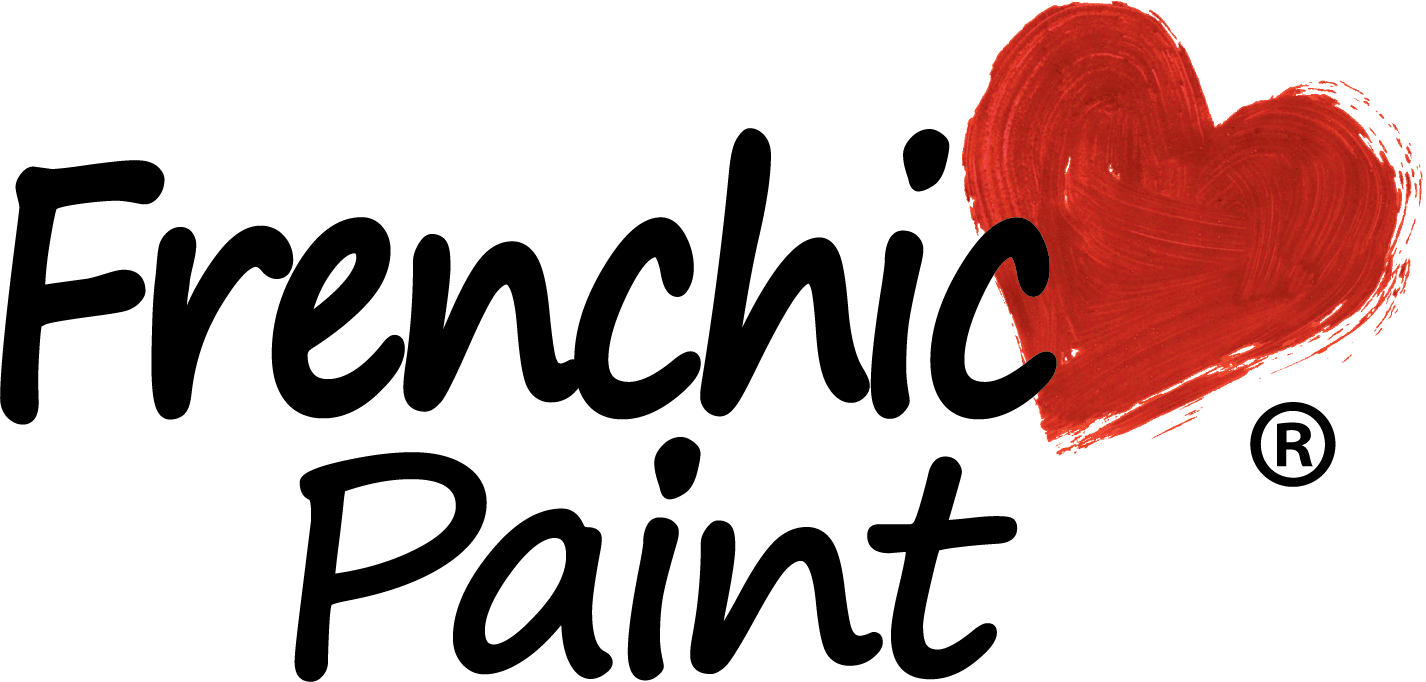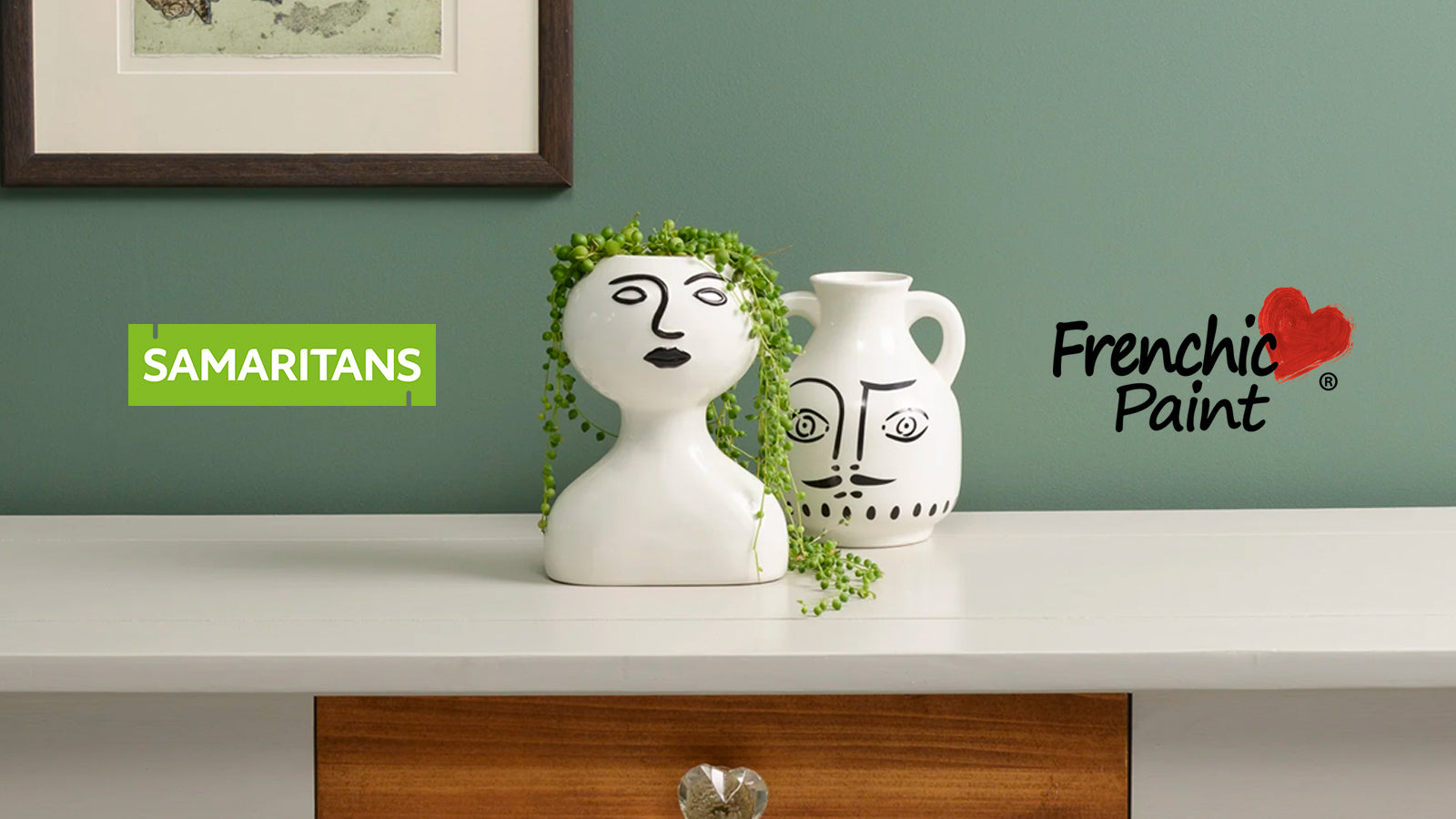With over 150 different shades to choose from, Frenchic aims to cover all bases when it comes to paint colours. But sometimes, the available colours aren’t quite what you’re looking for. Or maybe you just want to create something truly unique.
Not a problem. It’s certainly possible to mix your own paint shades to great effect. Read on as we cover the best practice for mixing paint and some considerations when creating your perfect shades…
How to mix paints and create something new!
Before you get started on the most wonderful concoctions, it’s important to know the best practice when it comes to mixing your own paint colours.
Experimenting with ratios
Initially, you can have a bit of an experiment on a piece of paper – add small amounts of each colour and blend well. Try to keep in mind the rough proportions of each colour you have used to enable mixing a larger quantity.
- Top tip – it’s worth waiting until the test paint has dried to check the colour is what you are looking for.
For a larger quantity, always ensure you mix very thoroughly. Again, you may need to experiment a little to match your test patch. As above, you should check your blend when dried.
Mixing the right amount
If you keep a clear record of the quantities of each colour you have used (for example by using measuring jugs and even syringes), you will be able to reproduce a very similar colour.
However, the likelihood of you reproducing a 100% exact match as your original blend, is quite low. Remember that mixing your own colour is not a 100% precise science. Professionally made paint colours are produced under highly regulated conditions and processes in order to be consistent. Replicating this at home is almost impossible.
In view of this, it is a good idea to mix a sufficient amount for each project you have in mind, all in one go.
Combining different ranges
If you want to mix paints from different ranges, there are other things to bear in mind. You will reduce the special qualities of each paint by adding a different one.
For example, if you add Chalk Wall Paint to Al Fresco to create a colour from left over paints you have, then it would be best to only use the mix for indoor projects as the weatherproof quality of Al Fresco will have been impacted.
You will also end up with a mixture of the finishes of the paints you have mixed. For instance, if you mix a matte finish with a shinier finish you will end up with something in the middle.
Tips and inspiration for mixing your own paint colours
Looking for some ideas on what paint to mix?
There are no hard and fast rules on which colours go together. It’s simply down to personal preference. Part of the fun is that you never know exactly what’s coming when you combine colours.
Below, we’ll run through some of the different considerations with our own paint mixing tests thrown in for good measure.
1. Get creative with colour combinations
Most people know the basics of colour combinations. Red and yellow makes orange, for example, while yellow and blue makes green. But you won’t just be mixing simple, primary colours. You can choose from a myriad of colours, each with their own qualities and undertones.
If you’re looking to create the perfect shade of purple, for example, red and blue are the key ingredients. But what if you combine a vibrant pink like Raspberry Punch with rich, purply blue Kiss Me Sloely?
The result is a deep purple that’s packed full of character… Take a look at this fantastic video by Fifi Parsons from Fifi's Fancy Furniture and see for yourself...
Looking to go a touch lighter? Try Raspberry Punch with a turquoise blue like Dive In! You’ll get a dark mauve that’s rich and warm. As you can see, the two “purples” are practically worlds apart.
2. Play around for the right balance
When you mix paint, you don’t need to use the same amount of each colour. If you want the end result to be darker, use a little more of the darker colour – and vice-versa for a paler shade.
Below, we mixed vibrant pink Raspberry Punch with sunny, cheerful Daffs. The result is a beautiful peachy, orange. You could make it a hotter orange with more pink or paler with a bit more yellow.
3. Unlock new colours with white
Adding white makes a colour paler while keeping the same tonal qualities. This is an excellent option for a standalone colour. Alternatively, you can create two complementary colours that work well together in situ.
For example, you could paint the outside of your furniture in the original colour (or mixture), then add white to paint to create a softer version of that colour. Use this mixture for the inside of your drawers or cupboard doors. It will tone nicely with the main colours while adding a bit of variation.
This is touched upon in the videos above, as you can add white to an existing mixture of two colours. Alternatively, you can simply add white to one colour – such as the combination of Dive In! and Dazzle Me! below:
4. Add drama with black
Last but not least, you can make a colour a darker shade without affecting its tonal qualities by adding black. As with white, this can be used to make complementary colours – one standard and one a little darker. Or just to create a single colour with a moody undertone.
When it comes to black, it’s important to remember that it’s much more dominant than most colours. As such, you can start with even the smallest amount and see how it impacts the colour.
If you love really dark colours but feel straight black is not for you, then you can create some wonderful colours using predominantly black and adding a strong jewel colour. For inspiration, check out this cabinet makeover by Abi Hugo, over at @thewhitethistle, using a mix of Blackjack and Victory Lane…
Find your perfect colour
If you’re looking for colours that are a bit out of the ordinary, Frenchic has more than 150 to choose from. Each of our colours offers something a little different with its own character and tonal qualities. From bold reds, blues and greens to neutrals that are full of personality, you’ll find it in our collection of chalk paint.
If you do choose to mix your Frenchic paint colours, we’d love to see how you get on. Send us your results on Instagram or join the Frenchic Fan Forum on Facebook to share your creations and get inspiration from other painting enthusiasts.








